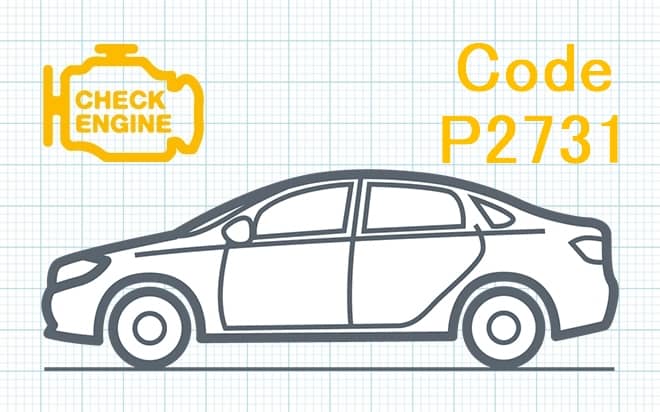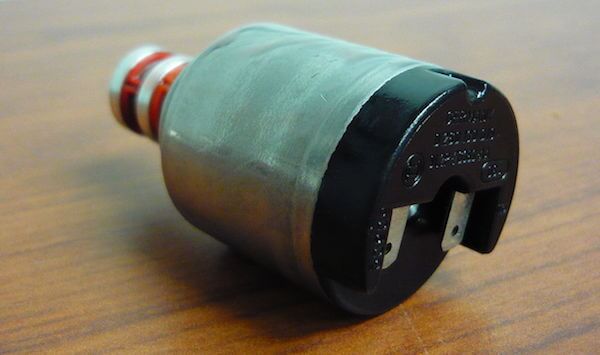
P2731 Pressure Control Solenoid F Malfunction
Content
- P2731 Pressure Control Solenoid F Malfunction
- OBD-II DTC Datasheet
- What does this mean?
- What is the severity of this DTC?
- What are some of the symptoms of the code?
- What are some of the common causes for the code?
- What are some steps to troubleshoot the P2731?
- What are the standard ways to fix this code?
- Related DTC discussions
- Need more help with the P2731 code?
P2731 Pressure Control Solenoid F Malfunction
OBD-II DTC Datasheet
Pressure control solenoid F malfunction
What does this mean?
This is a Generic Transmission Diagnostic Trouble Code (DTC) and is commonly applied to OBD-II vehicles equipped with an automatic transmission.
This may include, but is not limited to, Mitsubishi, Mercedes Benz, Nissan, BMW, Infiniti, Ford, Audi, VW, Audi, Honda, etc. Despite the general nature, the exact repair steps may vary depending on the year of manufacture. , make, model and configuration of the power unit.
When DTC P2731 OBD-II is set, the powertrain control module (PCM) has detected a problem with the "F" transmission pressure control solenoid. Most automatic transmissions have at least three solenoids, which are solenoids A, B, and C. However, for this DTC, the transmission contains at least six solenoids labeled A, B, C, D, E, and F. Fault Codes To Solenoid " F ”refers to codes P2731, P2732, P2733, P2734 and P2735. The set of codes is based on a specific fault that the PCM warns and turns on the check engine light.
The transmission pressure control solenoid valves control fluid pressure for proper automatic transmission operation. The PCM receives an electronic signal based on the pressure inside the solenoids. The automatic transmission is controlled by belts and clutches that shift gears by applying fluid pressure to the right place at the right time. Based on signals from associated vehicle speed control devices, the PCM controls the pressure solenoids to direct fluid at the appropriate pressure to various hydraulic circuits that change the transmission ratio at the right time.
P2731 is set by the PCM when the “F” pressure control solenoid experiences a general fault.
Example of a transmission pressure control solenoid: 
What is the severity of this DTC?
The severity of this code usually starts at moderate, but can quickly progress to a more serious level if not corrected in a timely manner.
What are some of the symptoms of the code?
Symptoms of a P2731 trouble code may include:
- The car goes into emergency mode
- Transmission slips when shifting gears
- Overheating of the transmission
- Transmission stuck in gear
- Reduced fuel economy
- Possible misfire-like symptoms
- Check Engine light is on
What are some of the common causes for the code?
Reasons for this P2731 transfer code may include:
- Defective pressure control solenoid
- Dirty or contaminated liquid
- Dirty or clogged transmission filter
- Defective transmission pump
- Defective transmission valve body
- Limited hydraulic passages
- Corroded or damaged connector
- Faulty or damaged wiring
- Defective PCM
What are some steps to troubleshoot the P2731?
Before beginning the troubleshooting process for any problem, you should review the vehicle-specific Technical Service Bulletins (TSB) by year, model and transmission. In some cases, this can save you a lot of time in the long run by pointing you in the right direction. You should also check the vehicle records to check when the filter and fluid were last changed, if possible.
Checking fluid and wiring
The first step is to check the fluid level and check the condition of the fluid for contamination. Before changing the fluid, you should check the vehicle records to find out when the filter and fluid were last changed.
This is followed by a detailed visual inspection to check the condition of the wiring for obvious defects. Check connectors and connections for safety, corrosion and damage to pins. This should include all wiring and connectors to the transmission pressure control solenoids, transmission pump, and PCM. The transmission pump can be electrically or mechanically driven, depending on the configuration.
Advanced steps
Additional steps are always vehicle specific and require appropriate advanced equipment to be performed accurately. These procedures require a digital multimeter and vehicle-specific technical reference documents. You should receive specific troubleshooting instructions for your vehicle before proceeding with the advanced steps. Voltage requirements can vary greatly from vehicle model to vehicle. Fluid pressure requirements will also vary based on transmission design and configuration.
Continuity checks
Unless otherwise specified in the datasheet, normal wiring and connection readings should be 0 ohms of resistance. Continuity checks should always be performed with circuit power disconnected to avoid short circuiting the circuit and causing more damage. Resistance or no continuity indicates faulty wiring that is open or shorted and requires repair or replacement.
What are the standard ways to fix this code?
- Replacing fluid and filter
- Replace defective pressure control solenoid.
- Repair or replace a faulty transmission pump
- Repair or replace a faulty transmission valve body
- Flushing transmission for clean passages
- Cleaning connectors from corrosion
- Repair or replacement of wiring
- Flashing or replacing PCM
Possible misdiagnosis may include:
- Engine misfire problem
- Transmission pump problem
- Internal transmission problem
- Transmission problem
Hopefully the information in this article has helped point you in the right direction for solving your pressure control solenoid DTC problem. This article is for informational purposes only and specific technical data and service bulletins for your vehicle should always take priority.
Related DTC discussions
- There are currently no related topics in our forums. Post a new topic on the forum now.
Need more help with the P2731 code?
If you still need help with DTC P2731, post a question in the comments below this article.
NOTE. This information is provided for informational purposes only. It is not intended to be used as a repair recommendation and we are not responsible for any action you take on any vehicle. All information on this site is protected by copyright.